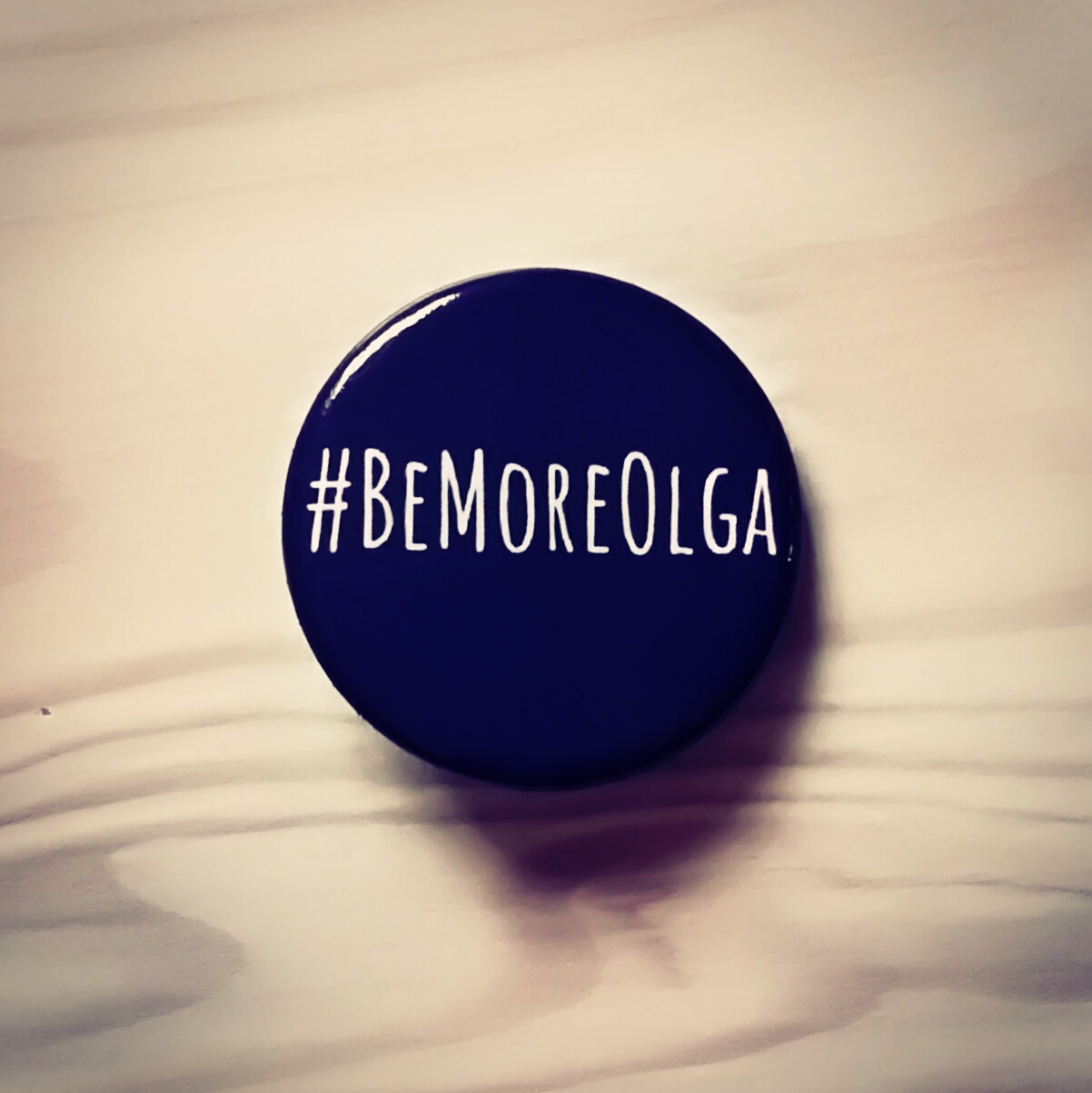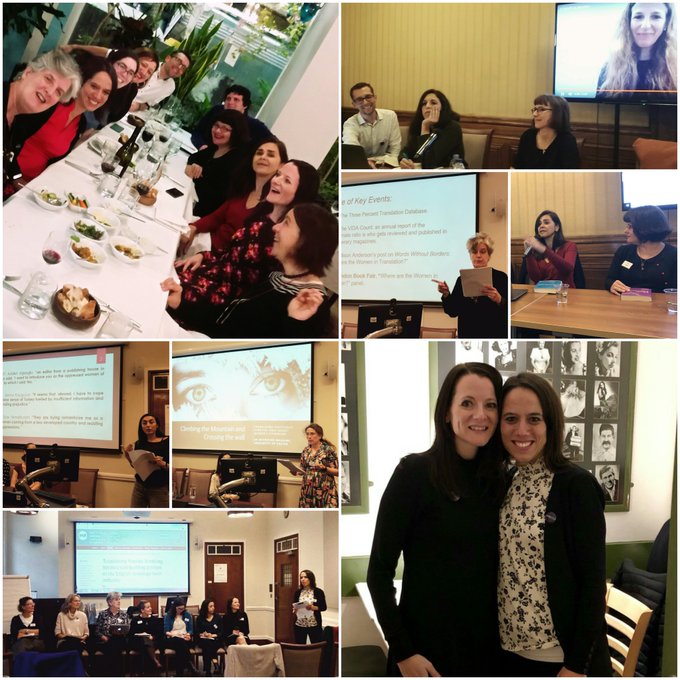For some time now, I’ve been lucky to work with feminist translation studies scholar Olga Castro on projects close to both our hearts: the most recent of these was organising the inaugural Translating Women conference, which took place on 31 October and 1 November 2019. If you use Twitter you can catch up on events via the #TWConf19 hashtag; in the meantime, here are my reflections on those two memorable and stimulating days.
Translating Women: Breaking Borders and Building Bridges in the English-language Book Industry was an event which, as keynote speaker Margaret Carson noted, enters the chronology of the Women in Translation movement. 70 energetic, engaged academics, translators and activists from four continents came together at the Institute of Modern Languages Research in London, UK, to discuss the barriers facing women in translation in the Anglophone world, and to come up with ways in which we could challenge these.
The defining feature of the conference for us was that this was not a group of people concerned with simply exposing the injustices of the status quo, but rather with challenging them. The conference opened with a rousing keynote from Carson, in which we were called upon to “Snap the gap”: the gap in question is the gender gap in publishing translated literature, and the “snap” is taken from Sara Ahmed’s Living a Feminist Life, in which “snap” moments are defined as tipping points, part of something bigger, a feminist call to action. The Translating Women conference was a “snap” moment for us collectively: the energy in the room over the two days was moving and inspiring, and brought up some necessary discussions.
Firstly, Carson invited us to be “troublemakers” – not to accept injustices just because they exist, not to be a marketing tool for publishers who do not prioritise “snapping the gap”, and to beware of women in translation “light”. This “troublemaking” was picked up in Rosalind Harvey’s impassioned indictment of the “triple absence” of Latin American women writers in discussions of “great” literature (indeed, as Carson warned us, “great writer” is in itself a gendered term). Harvey pointed out that women are not the default, and so when we make the cut we are troubling; this echoed Nicky Harman’s comments on Chinese women’s writing that “when writers are talked about collectively, what’s meant is ‘male writers’”. If even “writers” is a gendered term, then how much more gendered is “great writers”? It was for this very reason that delegates were sporting #BeMoreOlga badges – the badges stemmed from a response I wrote to the Nobel Prize in Literature awards earlier this year, and specifically in response to the chair of the prize committee justifying the paucity of women laureates across the prize’s history by claiming that “now we have so many female writers who are really great.” To this I argued that they were always there, but not seen; that they had always been great, but not recognised. The prize committee commended Tokarczuk’s work for “representing the crossing of boundaries as a form of life”, and so “#BeMoreOlga” is a call to action, a “snap” manifesto to do the same (you can imagine our excitement when Olga Tokarczuk herself was pictured wearing a #BeMoreOlga badge at the Nobel ceremony in December!)

The feminist engagement with crossing borders is particularly important, because many of us are still in relative positions of power. Women of colour – both writers and translators – receive less attention still than white women, as Corine Tachtiris discussed in her presentation on allyship and intersectionality. If Harvey reminded us that “people in positions of power are often blind to others’ powerlessness”, Tachtiris built on this by detailing initiatives that prompt white women translators to be feminist and activist allies by amplifying the voices of women of colour. Discussion elsewhere encompassed a broad geographical spread both across the panels (from the Pacific to Bangladesh, as well as “stateless” languages such as Kurdish) and within individual papers (for example, former Translating Women contributor Muireann Maguire showed how two Russian women writers have crossed immense geographical distances in their personal lives and enable their characters to do the same).
Arching over all of these discussions was a concept presented to us by Aviya Kushner: Expectation bias. Kushner described this as the stance that “I want you to write about what I want you to say”, an attitude that relegates women to a sphere that has already been picked for them, and assumes that these women writers have nothing to add to our experience of the world. This was picked up in Pâmela Berton Costa’s discussion of paratexts in The House of the Spirits, and the expectation that a woman could write about families and love, but not about history. As Kushner noted, expectation bias silences women, does not allow them to express their “wild individuality”, and condemns them to write about only what dominant structures want them to say. Kushner’s concept brought together so many of the talks we heard: Şule Akdogan showed that Turkish women writers are expected to write about a western conception of Turkey, while Aysun Kiran noted that Ece Temelkuran, despite her high profile, is still subjected to marketing exoticised by western concepts of Turkish women, and expected to produce books that fit in with Anglophone publishers’ understanding of her country. Expectation bias also drives what gets published in the first place: author Eva Moreda explained that Galician publishers lead the way in deciding which books get put forward for translation, but despite good numbers of women writing in Galician, very few books by women are put forward for translation into English, and both Harman and Berton Costa detailed the expectations of what women in the cultures they work with are expected to write about, or told they must write about. And, of course, the denunciation of expectation bias is at the heart of Harvey’s comments on how “troubling” women are: we had all been implicitly talking about expectation bias, without a concept that we could cite – Kushner has given us that concept in one of the greatest “snap!” moments of the conference.
The second day of the conference opened with a plenary session on initiatives promoting women in translation: Godela Weiss-Sussex and Heike Bartel presented their “Encounters” seminar series, which promotes dialogue between authors and translators; Margaret Carson showed us the Women in Translation tumblr that she runs with Alta L. Price, and which is a key repository for information about WIT; Chantal Wright talked about the joys and challenges of administering the Warwick Prize for Women in Translation; the inimitable Meytal Radzinski, founder of #WITMonth, explained why she started this work and how it has grown, and Salwa Benaissa talked about why she decided to launch the new online publishing initiative Project Plume, focusing on under-represented women writers in translation. Finally, I was honoured to be able to talk to delegates about the “snap!” moment that led me to create and develop the Translating Women project.
We were also lucky enough to have two dynamic and inspiring author-translator events as part of the conference: on the first evening, Négar Djavadi and Tina Kover, author and translator of the prize-winning Disoriental (Europa Editions, 2018) discussed issues of cultural silencing (of political dissidence, sexual difference, and gender oppression), with an empowered Kover asserting her accreditation as the author of the translation. The following evening, Ariana Harwicz, Annie McDermott and Carolina Orloff (the latter via video) discussed their collaboration on the translation of Harwicz’s explosive Feebleminded, which Harwicz kicked off with the comment that “I’m completely atheist, but I believe in the translator”. The authors and translators discussed their work equally, highlighting one of the important themes of the conference: the visibility of the translator – not in terms of the text, but in terms of agency.
Key challenges raised by the conference participants included the lack of gender parity in translated literature, the “invisibilisation” of the translator, and the evidence that in overviews and surveys, women are simply overlooked (Carson denounces Tim Parks; Harvey counters Matt Bucher). We should demand better, cite women, channel the fellowship we all experienced in those two days to fight the status quo, to challenge expectation bias, to speak on behalf of those who are silenced, to build bridges by, in the words of Olivia Hellewell, “first understanding the terrain on the other side.” It is not just our right to be “troublemakers”, but also our responsibility. Snap!
You may also like to read:
Margaret Carson reports on the women in translation tumblr: “WiT goes to Senate House”
Salwa Benaissa of literary initiative Project Plume gives a full round-up of all the papers and events.
Barbara Spicer writes the conference report for the Institute of Modern Languages Research blog (Living Languages).
Podcasts of author-translator events
Day One: 31 October 2019.
Author Négar Djavadi (Disoriental, 2018) and translator Tina Kover
Day Two: 1 November 2019.
Author Ariana Harwicz (Die, My Love, 2017; Feebleminded, 2019) and translators Carolina Orloff and Annie McDermott
